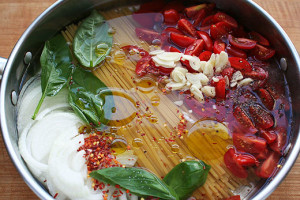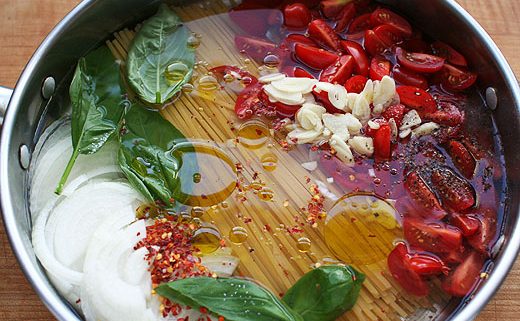Can Pasta Be Healthy?
 It is a common misconception that pasta is an unhealthy meal option. One reason pasta might be considered unhealthy is due to its high carbohydrate content. To some, high carbohydrate foods are viewed as unhealthy. However, this is founded on the delusion that all carbs are bad, and fails to consider healthy carbohydrates, such as whole grains. If pasta is made from whole grains, it can absolutely be part of healthy meal planning.
It is a common misconception that pasta is an unhealthy meal option. One reason pasta might be considered unhealthy is due to its high carbohydrate content. To some, high carbohydrate foods are viewed as unhealthy. However, this is founded on the delusion that all carbs are bad, and fails to consider healthy carbohydrates, such as whole grains. If pasta is made from whole grains, it can absolutely be part of healthy meal planning.
Below are some tips on how to make pasta a healthy and nutritious option.
What is it made of? The trip down the pasta aisle in a supermarket can be intimidating. There are so many shapes and types to choose from that it takes up almost half of an entire aisle. While shopping, look for pastas made from whole-wheat flour, or flours made from peas, lentils and other legumes. These types of pastas are generally higher in fiber. There are also pastas made with vegetables such as spinach and carrots, but beware of the nutrition label with these varieties. Many of these pastas are synonymous to regular semolina pasta and while they include traces of vegetable, you are still missing out on B vitamins, magnesium, and other nutrients only found in whole grain versions.
Portion control: When you imagine a plate of pasta, do you think of a heaping bowl or plateful? Take a look at a box and you’ll notice a standard serving of pasta is 2 ounces dry, which equates to about one cup cooked. To volumize your portion, make pasta dishes with vegetable or lean proteins to bulk up your plate and portion.
Picking your protein: Two of the more traditional sidekicks for pasta are meatballs and sausage. However in traditional preparation, meatballs and sausage have a significant amount of unhealthy saturated fats. To create a healthier dish, pair pasta with leaner protein options, such as chicken breast or ground turkey. Beans, legumes and soy protein such as seitan are other healthier protein options that can be added to pasta dishes. When browned in a pan, seitan takes on the look of ground beef but is totally meat free! Flavor with garlic and diced onion and you’ll never know the difference!
Sauce selection: Often times, pasta comes topped with thick, creamy sauces that can also add extra fat and calories. Lighter sauces include garlic and oil or pesto, white wine and broth, or a simple tomato puree sautéed with garlic, onions and basil. A new trend that has popped up recently is the one-pan pasta. One-pan pasta recipes call for boiling the pasta and making the “sauce” at the same time all in one pan. This is a great way to get flavor into the noodles without having to add lots of extra sauce. Lighter sauces allow you to hold the cheese for garnishing instead of incorporating it into the sauce. If you are craving a creamy sauce, portion accordingly or make your own versions using nonfat, plain Greek yogurt instead of cream!
As you can see, just a few small changes can result in a healthier pasta dish!
Your turn to take action: What changes will you make toward healthier pasta dishes?


The suggestions in this post is a great reminder. I may love Alfredo sauce but I only have it once in awhile due to the heavy calories. I have also tried to switch which type of pasta I cook making it a healthy choice for my family.
I’m glad the suggestions were helpful!